How to choose fan-shaped filter cup-comparison of flow velocity of Melitta, Kalita and Sanyo filter cup
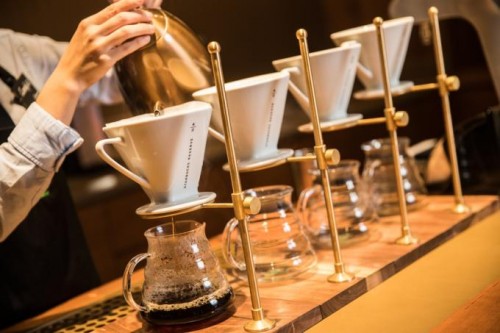
Professional coffee knowledge exchange more coffee bean information please follow the coffee workshop (Wechat official account cafe_style)
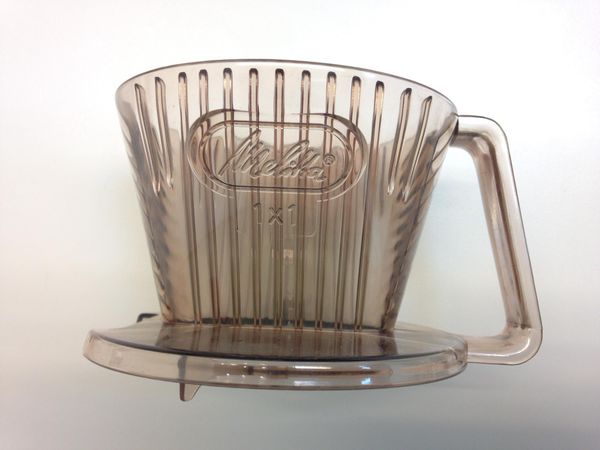
When it comes to trapezoidal filter cups, I believe everyone will think of the ancestors of fan-shaped filter cups, that is, Melitta. With regard to the history of Melitta, there is already a lot of data to find on the network, so I won't repeat it here.
What I would like to share with you is the fan-shaped filter cups commonly used by coffee shops in the past five years.
In addition to the Kalita filter cup commonly used by shops in the early millennium, many shops who have used fan-shaped filter cups in recent years use "three-ocean filter cups," which is the filter cup used by Mr. Taguchi, the godfather of Baja coffee in Japan.
In this experiment, I will use four kinds of filter cups to compare the flow rate, which are:
1. Melitta 1X1 resin filter cup
2. Kalita 101ceramic filter cup
3. Kalita 101Bozo Burning Ceramic filter Cup
4. Sanyo Youtianyo Coffee Dripper 101ceramic filter cup
The parameters of the same experiment are the same except for the filter cup.
Water: RO reverse osmosis water at room temperature
TDS:0.03ppm
Water volume: 250g
Filter paper: Kalita 101unbleached filter paper
Intelligent scale: ACAIA
Experimental method:
1. Put the lower seat on the intelligent scale, and the upper seat (filter cup) on the hand frame, which is separated from the lower seat.
two。 Fold the filter paper and put it on the filter cup and pour 250 grams of water into the filter cup covered with the filter paper at one time.
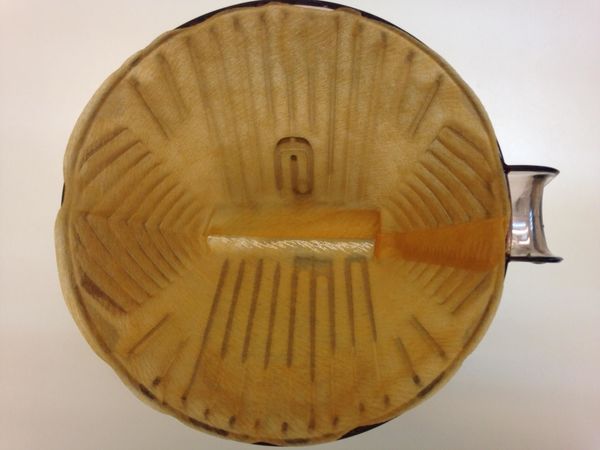
The picture above shows how the filter cup fits with the filter paper after the Melitta 1X1 resin filter cup is drained. As can be seen in the photo, due to the distribution of the ribs, the part of the filter cup attached to the filter paper is only attached to the top of the ribs. Let's take a look at the change in velocity:
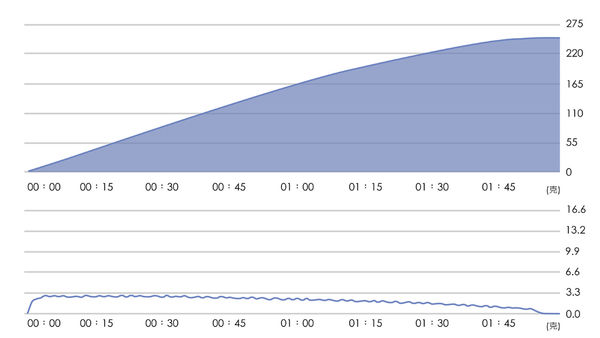
From the picture above, the velocity curve of the total water accumulation in the upper way; the pressure curve is at the bottom.
According to the situation in the picture, perhaps because of the one-sided relationship of the outlet, the water pressure has been very stable. It is only at about 1 minute 52 seconds that the pressure begins to drop, indicating that the flow rate is faster, and at this time the water level falls to the position of the ribs. The time to drain completely is about two minutes.
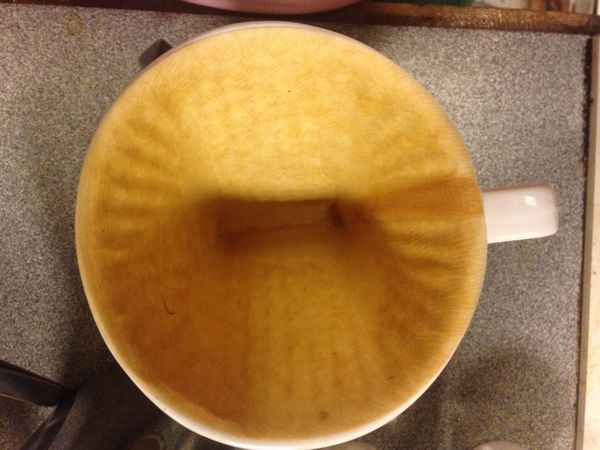
The picture above shows how the Kalita 101ceramic filter cup fits with the filter paper after it has been drained. As can be seen from the photo, because the ribs are very shallow, the filter cup and the filter paper are almost completely attached. Let's take a look at the change in velocity:
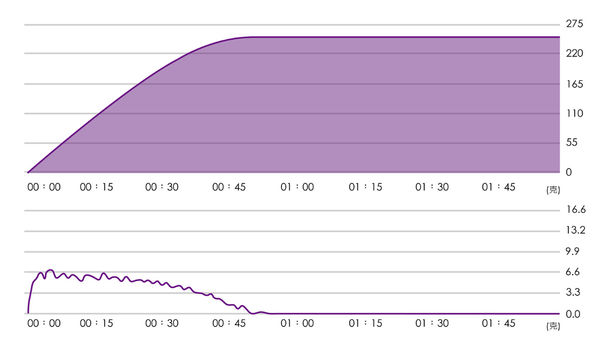
According to the situation in the picture, it is obviously different from that of Melitta 1X1. The pressure begins to drop at about 20 seconds, and the time to drain completely is about 47 seconds, which is much faster than that of Melitta 1X1.
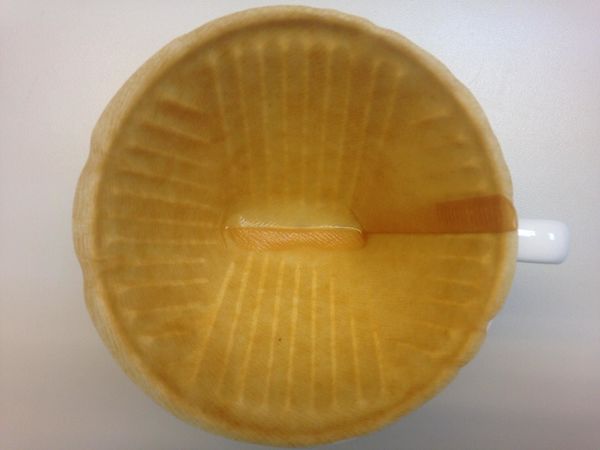
The picture above shows how the filter cup fits with the filter paper after the filter cup is drained. From the photo, we can see that the ribs are much deeper than the Kalita 101ceramic filter cup, and the bottom of the filter cup is also deepened, so that the bottom of the filter paper can not be attached to the bottom of the filter cup. Let's take a look at the change in velocity:
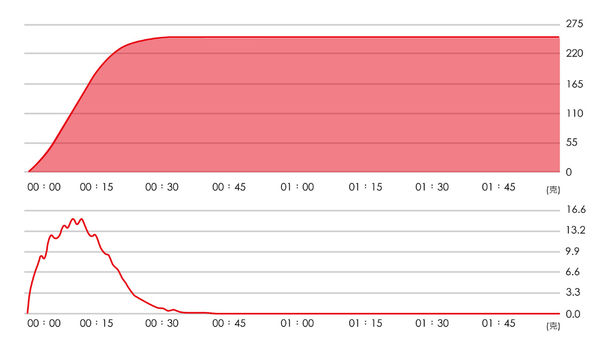
According to the situation in the picture, the condition of the ceramic filter cup is obviously different from that of Kalita101. The pressure begins to drop in about 14 seconds, and the time of complete drain is about 30 seconds in advance, which is much faster than that of Melitta 1X1 and Kalita101.
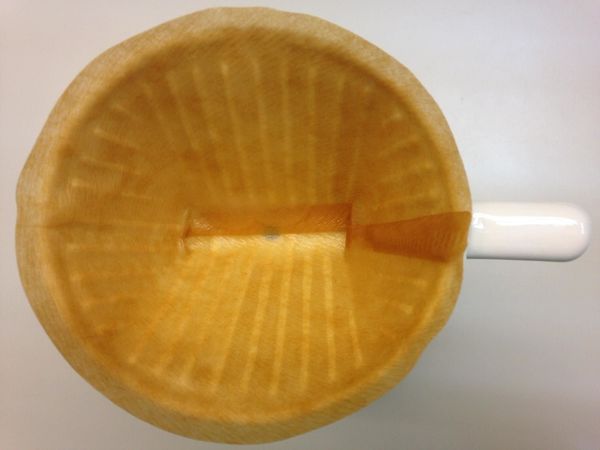
Finally, after the Sanyo 101 ceramic filter cup is drained, the filter cup fits with the filter paper. As can be seen from the photo, the ribs are deep, so there are not too many blocks attached to the filter cup. The bottom of the filter cup is a large hole, which is different from the three small holes of Kalita. Let's take a look at the change in velocity:
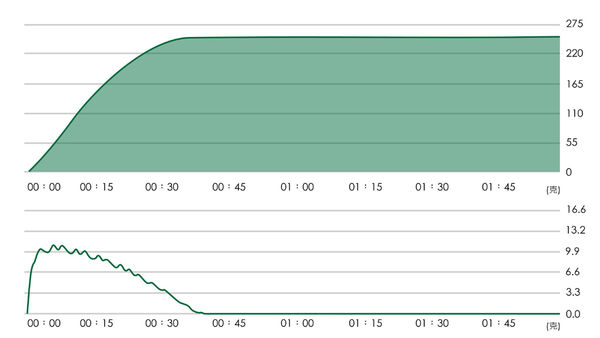
According to the situation in the picture, the velocity of burning is slightly different from that of Kalita. The pressure begins to drop at about 5 seconds, and the time to drain completely is about 35 seconds.
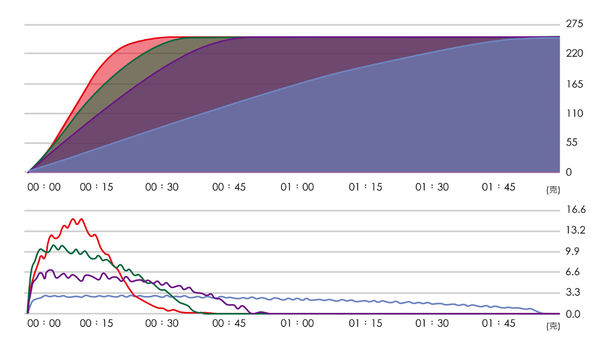
The above picture is my comparison of the flow velocity of the four filter cups. The colors are:
Blue: Melitta 1X1 resin filter cup
Purple: Kalita 101ceramic filter cup
Green: Sanyo 101 ceramic filter cup
Red: Kalita 101bozo sukiyaki
From this comparison chart, it is also confirmed that the four confessions are different in their internal structures.
Bozo saw the burning because the bottom is not stuck to death, but the flow rate is the fastest, while the Melitta 1X1 resin filter cup because the outlet is on the side, and is higher than the bottom, the flow rate is the most stable, but also the slowest.
On the other hand, the general model of Kalita is similar to that of Sanyo, so the flow rate is also close.
The above is for your reference.
Hand coffee filter cup is very knowledgeable! Flow rate data of several common coffee filter cups
In this era when a hundred schools of thought contend, how should we choose the fan / trapezoidal filter cup?
.
Important Notice :
前街咖啡 FrontStreet Coffee has moved to new addredd:
FrontStreet Coffee Address: 315,Donghua East Road,GuangZhou
Tel:020 38364473
- Prev
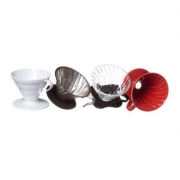
What is the difference between kalita fan-shaped filter cup and wave filter cup? What is the difference between the flavor and taste of coffee?
Professional coffee knowledge exchange more coffee bean information Please pay attention to the advantages and disadvantages of coffee workshop (Wechat official account cafe_style) Kalita Wave wavy cup coffee filter cup perfect use of cake cup recall that you just started to brew coffee, do you often question why there are so many kinds of filter cups? what is the difference between them? In 1908, Mrs. Melita invented the world's first hand filter.
- Next
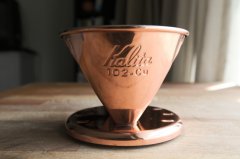
Is the kalita three-hole filter cup easy to use? Kalita filter cup choose ceramic or plastic or copper filter cup?
Professional coffee knowledge exchange more coffee bean information please pay attention to the advantages and disadvantages of coffee workshop (Wechat official account cafe_style) Kalita Wave wavy cup coffee filter cup perfect use of cake cup summer has passed, the lower temperature made my Kalita ceramic filter cup into the hot cup trouble stage, so take advantage of this time, buy Kalita classic 102 copper from Japan
Related
- What is the Philharmonic pressure? How to use Philharmonic pressure to make delicious coffee
- Why does a hand grinder have more fine powder than an electric grinder?
- In addition to the hot mom, what is the difference between the versions of EK43 | ditting and Mahdi ek43?
- What kind of equipment do you need to make coffee by hand? Introduction to novice starter cooking equipment tools
- Espresso needs to be ground how thick and thin scale entry Italian Coffee Machine Bean Grinder investigation and Grinding course
- How much does it cost to open a small private cafe? How much does it cost to learn coffee? How to operate it?
- The difference between the flavor characteristics of hand-brewed coffee and coffee maker is hand-brewed coffee really better than coffee maker? Can I use a coffee machine to make coffee beans by hand?
- The difference between 01 and 02 of hario v60 filter cup what is the difference between 01 and 02 filter cup opening and cooking flavor
- What's the difference between the smart cup and the French kettle? Which is better, the French kettle or the Smart Cup?
- What's the difference between a smart cup and a V60 filter cup? The difference between the taste of smart cup and hand-brewed coffee

